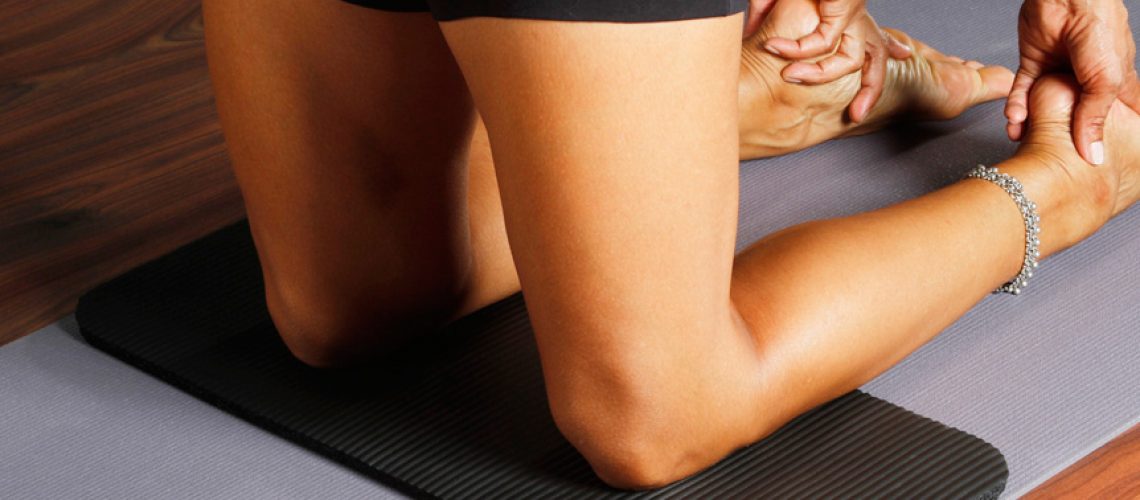We do not always consider the complexities associated with knees unless you have actually suffered or sustained an injury. The knee is the single most delicate joint of the human body. It is responsible for our ability to move freely, walk, stand, pretty much everything! In yoga, there are so many postures that affect this area. However, if not practiced with awareness and alignment can cause more harm than good. Many of us currently suffer from some orthopedic problems. Such as Arthritis, Anterior Cruciate, Meniscal and Collateral Ligament tears, Stress Fractures, Osgood-Schlatter Disease, Runner’s Knee, etc. A Yoga knee pad for pain is a great tool to strengthen knees.
Yoga is a wonderful way to help strengthen knees.
There is an opportunity to understand your knee anatomy a little better. While practicing, there is a chance to relieve pain and tone the surrounding muscles. Specifically, those that attach to the distal portion of the Femur and the proximal portion of the Tibia and Fibula. The overall make-up of the knee is a handful of very important ligaments. A floating bone (Patella), and Synovial Fluid to keep the joint lubricated and functioning properly. When together, a few ligaments, some fluid, and floating bone are responsible for our very ability to walk!! It’s pretty mind-blowing when you think about it.
This brings me back to my point…
There is no room for error when it comes to the delicate nature of our knees. In the practice of yoga, there are several yoga postures to help strengthen the knees. Such as Lunges, Warrior Poses, Standing Balancing Poses. Also, there are poses to help create flexibility. Such as Pigeon Pose, Lotus Pose, Fire Logs (Double Pigeon), Child’s Pose, and others. There is, however, one key ingredient, which facilitates a smooth and supportive experience during practice. And that my friends, is the oh so amazing SukhaMat!
The SukhaMat yoga knee pad for pain is the best tool to support the knees.
It is also great support for ankles, tail bones, cervical bones, elbows, pelvic bones, and the tops of the feet! The SukhaMat allows you to get “Knee Deep” in beneficial postures such as Lunges, with one knee to the floor. Or Camel Pose, Child’s Pose, Cobra Pose, and others. All of these in which the knee is directly on the mat and hard surface. In addition to the SukhaMat, there are other props to use to support one’s practice. This includes straps, blocks, blankets, bolsters, and chairs. All of these elements create a solid practice, rooted in alignment. Also, the health of the body along with strength, flexibility, and balance.
When it comes to the complexities of the body and nuances of yoga practice, practice with patience.
Learn the art of listening to your body. Be mindful of your limitations and accept exactly where you are in your current level of physicality and yoga practice. Injuries occur practicing yoga, simply because we want to do more than what our body prepares to do. One of the main benefits, if you have a health concern, is that yoga can be a healing tool. Yoga can be a useful means of assisting the body in its ability to heal.
Practice wisely, use yoga props, be mindful of injuries. Furthermore, accept where you are, so that you may enjoy the growth of your yoga practice!
